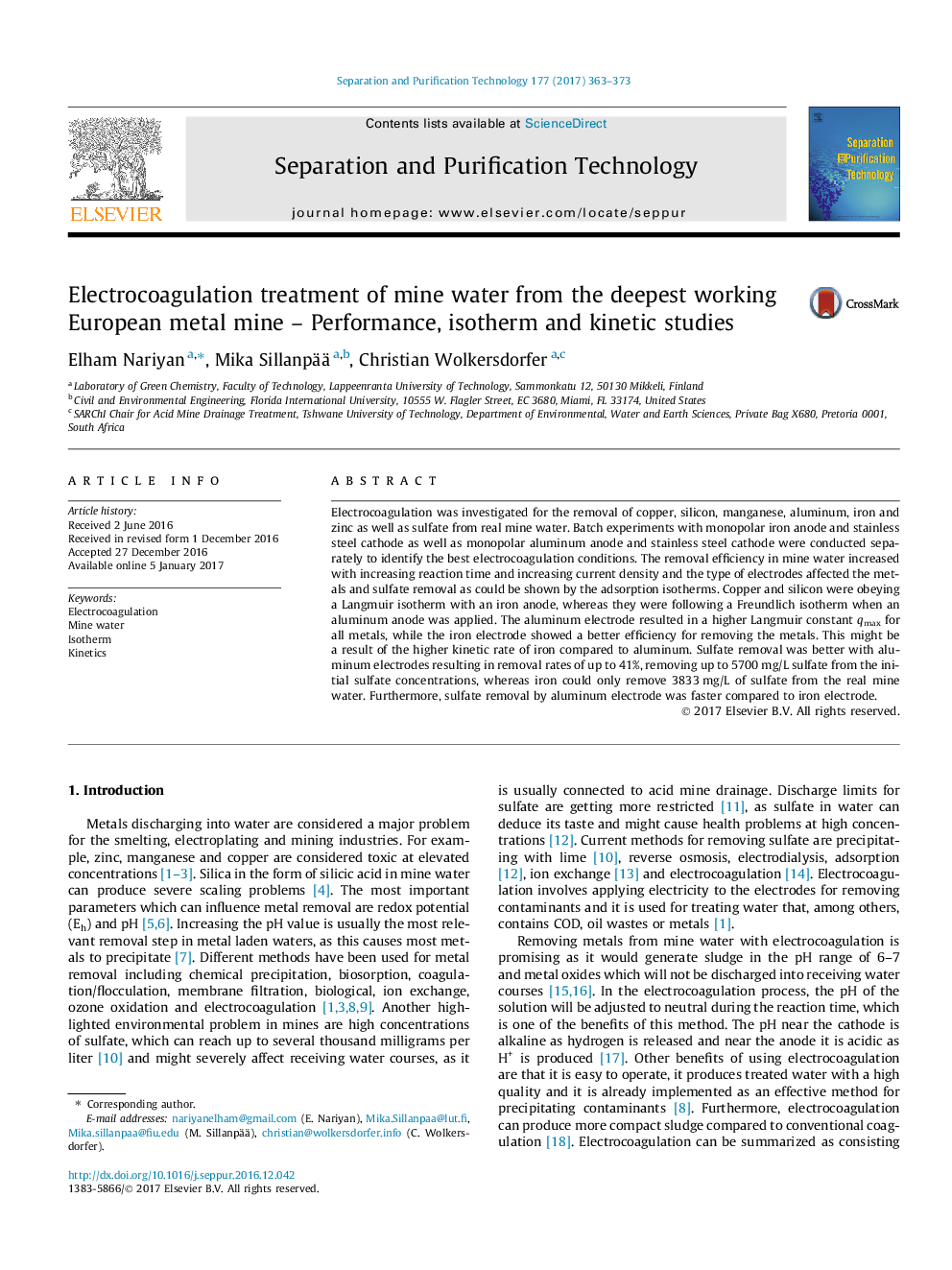| کد مقاله | کد نشریه | سال انتشار | مقاله انگلیسی | نسخه تمام متن |
|---|---|---|---|---|
| 4990152 | 1456943 | 2017 | 11 صفحه PDF | دانلود رایگان |
عنوان انگلیسی مقاله ISI
Electrocoagulation treatment of mine water from the deepest working European metal mine - Performance, isotherm and kinetic studies
ترجمه فارسی عنوان
درمان الکتروکواگولاسیون از آب معدنی از عمیق ترین کار معدن فلزی اروپا - عملکرد، ایزوترم و مطالعات جنبشی
دانلود مقاله + سفارش ترجمه
دانلود مقاله ISI انگلیسی
رایگان برای ایرانیان
کلمات کلیدی
الکترو کلاژن، آب معدن، ایزوترم سینتیک،
موضوعات مرتبط
مهندسی و علوم پایه
مهندسی شیمی
تصفیه و جداسازی
چکیده انگلیسی
Electrocoagulation was investigated for the removal of copper, silicon, manganese, aluminum, iron and zinc as well as sulfate from real mine water. Batch experiments with monopolar iron anode and stainless steel cathode as well as monopolar aluminum anode and stainless steel cathode were conducted separately to identify the best electrocoagulation conditions. The removal efficiency in mine water increased with increasing reaction time and increasing current density and the type of electrodes affected the metals and sulfate removal as could be shown by the adsorption isotherms. Copper and silicon were obeying a Langmuir isotherm with an iron anode, whereas they were following a Freundlich isotherm when an aluminum anode was applied. The aluminum electrode resulted in a higher Langmuir constant qmax for all metals, while the iron electrode showed a better efficiency for removing the metals. This might be a result of the higher kinetic rate of iron compared to aluminum. Sulfate removal was better with aluminum electrodes resulting in removal rates of up to 41%, removing up to 5700Â mg/L sulfate from the initial sulfate concentrations, whereas iron could only remove 3833Â mg/L of sulfate from the real mine water. Furthermore, sulfate removal by aluminum electrode was faster compared to iron electrode.
ناشر
Database: Elsevier - ScienceDirect (ساینس دایرکت)
Journal: Separation and Purification Technology - Volume 177, 28 April 2017, Pages 363-373
Journal: Separation and Purification Technology - Volume 177, 28 April 2017, Pages 363-373
نویسندگان
Elham Nariyan, Mika Sillanpää, Christian Wolkersdorfer,
